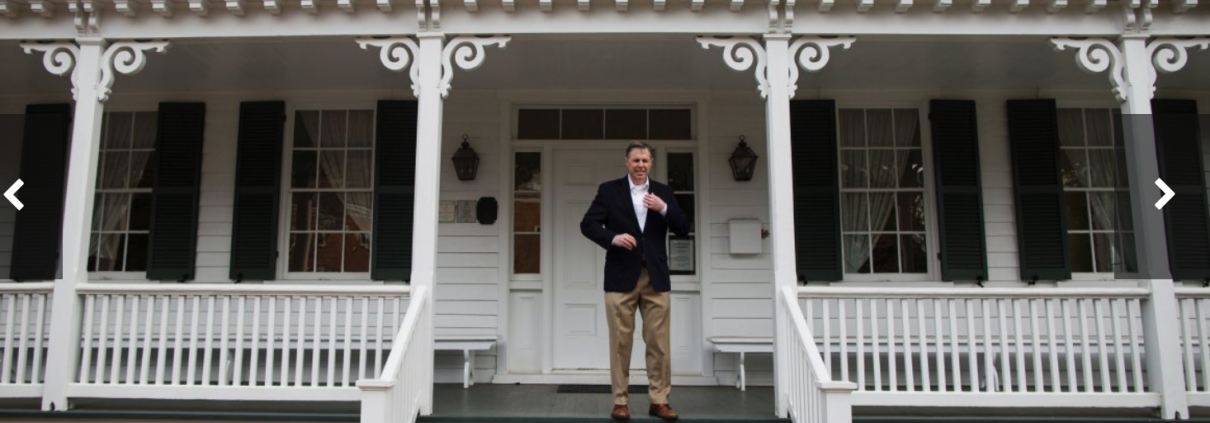Falls Church recognized as healthiest community in America
FALLS CHURCH, VA. — FOR decades, the educated and affluent have flocked to communities in northern Virginia, which boasts excellent schools, high-quality health care and easy access to the nation’s capital.
But of all the communities in the region – and indeed, the country – one tops the rest when it comes to measuring the crucial social and physical factors that combine to shape the health and well-being of its residents.
That community is Falls Church, a roughly 2-square-mile city nestled between the much larger counties of Arlington and Fairfax that holds the No. 1 spot in the inaugural U.S. News rankings of the Healthiest Communities in America. The project, created in collaboration with the Aetna Foundation, scores nearly 3,000 communities across 80 metrics that extend beyond health coverage and doctors’ visits to social determinants like income, housing and public safety, aiming to determine how location and circumstances affect the overall health of Americans across the country.
A strong economy, top-notch school system and safe neighborhoods helped Falls Church – originally settled more than 300 years ago and incorporated as an independent city in 1948 – trump top 10 places in Colorado, Indiana and elsewhere in Virginia to earn the title of America’s Healthiest Community. Home to more than 14,000 people and branding itself “The Little City,” it’s striving to preserve its small-town feel amid a shift from sleepy Virginia suburb to bustling burg on the outskirts of Washington.
“It’s a small place that a lot of people don’t know about really, but it’s got a great quality of life, and it’s just a little bit like Mayberry,” Mayor David Tarter says. “It’s a place that still has that feel, maybe from a bygone day, where people walk and they talk to each other, they know each other, they know each other’s kids and families, they look out for each other. Yet they have the nation’s capital just a short train ride away.”
In Falls Church, health is built into much of daily life, with the city often partnering with local businesses, community groups and the school system to promote wellness initiatives. Its handful of public schools focus on students’ mental health, mindfulness, healthy eating and physical fitness, with an early morning exercise class hosted at the middle school and an annual “Stress Less Week” featuring therapy dogs and yoga classes at George Mason High School. School lunches are often made with locally sourced ingredients, including lettuce grown hydroponically at the high school.
Outside the school system, healthy food is accessible through a large new grocery store and weekly farmers market. Residents benefit from accessible primary care doctors and widespread health insurance coverage, likely due in part to the city’s above-average share of workers employed by the federal government. Falls Church leadership also prioritizes environmentally friendly initiatives, with plans for a new bike share and an emphasis on something as seemingly small as safer, cleaner sidewalks.
The mayor, who often points out cracks in the sidewalk that need to be fixed along the route from his house to City Hall, says making the city more aesthetically pleasing and convenient for residents is key to making Falls Church a better place to live.
“We’re trying to create a more walkable, bikeable, vibrant downtown so that people don’t have to leave our community to get services and goods and entertainment, and so they can do it all within the boundary of our city,” Tarter says.
It doesn’t hurt that Falls Church is among the wealthiest and most highly educated cities in the country. Around a quarter of its households earn $200,000 or more annually, according to U.S. Census Bureau estimates, and the poverty rate is around 3 percent. About 80 percent of adults 25 or older hold at least a bachelor’s degree, more than double the rate in Virginia and the rest of the U.S.
The city’s strong score in the community vitality category also helped propel it to the top of the Healthiest Communities rankings, with a politically engaged citizenry and a high concentration of registered nonprofits in the area. Residents say it’s that level of community engagement that drives the city’s high scores in additional categories such as education and infrastructure.
Perhaps no resident is as involved as Marybeth Connelly, who moved to Falls Church in 1995 and has witnessed the city’s revitalization firsthand. Connelly currently serves as vice mayor, runs community outreach for the public schools and organizes local events, calling herself “the Match.com of Falls Church.”
She just finished planning the city’s second annual women’s history walk, “a lovely community event that combined some fitness and some education and people of all ages,” she says.
“For many years the school system was the primary draw, but as the city has become more walkable, more friendly, a better place to live, there’s other draws, too, now,” Connelly says. “People come here who don’t have kids, who just want to live in a community where they can walk and go out to dinner. We really are actively trying to get people like that to come here.”
Once passed over for its larger neighbors, Falls Church has seen a flurry of development in recent years that has increased residents’ access to services while mirroring the city’s shifting dynamics. A new string of chains, including a Harris Teeter grocery store and a small-format Target, stands in stark contrast to smaller businesses like Brown’s Hardware, which first opened its doors in 1883.
The new development has fueled concerns of displacement among some small-business owners, though it also has boosted the local economy and helped the city fund services for its growing population. Between 2016 and 2017, Falls Church gained about 700 residents, resulting in population percentage growth that outpaced any other community of its type in the nation, according to recent census estimates.
“The new buildings, which are beautiful and nice and offer amenities that the communities need, are much more expensive,” says Sally Cole, who moved to the city in 1998 and is executive director of the Falls Church Chamber of Commerce. “As more and more development happens, it’s going to be harder for the independent businesses to stay.”
One redevelopment project forced Esmat Niazy, who lives nearby in Vienna, Virginia, to move his family’s Afghan restaurant after more than 30 years in the same location. Uncertainty over whether he’d have to relocate “has been a strain on my wallet,” he says, but he’s gotten good feedback from customers who like his new space just a few minutes away in the city.
Another challenge: As new residents are drawn by the city’s schools and sense of community, its growth has tested it in areas of equity and housing affordability – issues that plague other top communities in the U.S. News rankings.
In Falls Church, nearly a third of households are severely cost-burdened, spending more than 30 percent of their incomes on housing or rent costs each month. And there are issues of income inequality and racial gaps in educational attainment in the increasingly diverse city, which is about 70 percent non-Hispanic white.
Yet residents and officials seem eager to combat each challenge that arises. To help moderate- and low-income residents stay, the city implemented a voluntary program in which developers can set aside 6 percent of all new apartments for households meeting certain income thresholds. Those developers who participate are considered for exemptions from some building height and use requirements.
“This is a very high-income area, and the poverty rate is low, but it’s not nonexistent,” says Nancy Vincent, who leads the city’s Housing and Human Services department. “There’s a group of low-income folks, and quite a few low-income seniors in the city. These folks are an important part of the community and culture of the city, and it would be a huge loss for them not to live here.”
To highlight racial inequality and discrimination, as well as strengthen business ties in the community, Cole’s chamber has partnered with the region’s Arab American Business Council to host mixers and speaking events where members network and learn about challenges facing minority business owners.
Marwan Ahmad, who heads the business council, says city leadership has been “very open and very inviting to us as businesses and individuals.” He hopes neighboring Fairfax County and Virginia as a whole “will follow suit, because this is a good example of how we can work together.”
Following the city’s lead – both in areas in which it excels and in its efforts to improve – might be a good idea for communities across the nation.
After all, Falls Church is the Healthiest Community in America.




